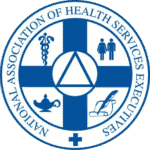One of the six pillars of the National Association of Community Health Centers (NACHC) is to “strengthen and reinforce the infrastructures when leading and coordinating the community health movement.” As the leading national umbrella for the FQHC community, NACHC is the advocate in Washington and at the state level for community-based healthcare centers. We look to the leadership of these organizations to educate government representatives about the importance of funding for our critical service organizations. But what is the practical application of this pillar? How can the NACHC and other state-level organizations build the partnerships necessary at the government and private levels to reach this goal?
What is NACHC’s Second Pillar?
As a leader in the community health movement, NACHC strongly advocates for the Board structure current to FQHCs, supporting the requirements that community members also serve as mentors for these organizations. Their second pillar seeks to support FQHC boards by emphasizing their importance as well as helping educate these critical infrastructures on “the emerging realities to which health centers must quickly adapt.” Their goal is to educate board members and provide “training, resources, and guidance to support health center boards and individual board members.” This pillar also emphasizes diversity, equity, and inclusion (DEI) in recruitment strategies, leadership succession planning, and ongoing professional development for the staff and leadership of FQHC organizations.
How can your FQHC apply the NACHC pillar to your organization?
Applying NACHC’s Second Pillar to Your FQHC
A FQHC is truly unique in that federal requirements demand a majority of board members reside in the community. The remaining board members must have received services from the center. These board members must be representative of the demographics of the area and should be selected for their expertise in community affairs. The benefit for the FQHC is that these board members are likely more attuned to issues within their community, making them the catalyst for a higher level of patient-centered care.
With that said, this community-based board structure can often be a detriment when some of the complexities of federal funding or when the FQHC is making a strategic move to partner with an investor or competing facility. That makes training and education of these members critical to gaining the trust and understanding of any big picture issues that can arise at the center. NACHC offers a board training that is a good starting point for any new member on your governing infrastructure. The training helps your board members:
- Understand the roles and responsibilities of their board seat.
- Gain skills in financial and governance-related oversight.
- Learn and apply strategic thinking and planning.
- Review and understand the quality of care and quality improvement plans.
- Create CEO succession plans, a hiring process, and compensation.
- Learn how to participate in or run an effective board meeting.
- Increase their leadership skills.
- Understand the complex healthcare topics in the FQHC field.
The NACHC also has e-learning modules for board members who cannot travel to attend the on-site training. This training is a good way to strengthen and reinforce your infrastructure as you work to achieve the mission of your FQHC organization.
UHC Solutions is the nation’s leading staffing agency for the FQHC community. Our job is to support your infrastructure with highly qualified clinical and administrative talent. Talk with our team today to find out how we can help.




